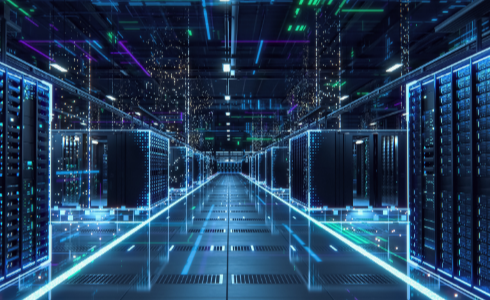How Hyperscalers Are Reshaping the Data Centre Structure in India

India is rapidly digitising, which is altering the infrastructure rules. In addition to the notable rise in OTT consumption, the nation is witnessing a spike in digital payments, 5G rollouts, and AI-driven services. The demand for storage and processing power is now at an all-time high. Addressing this need goes beyond what traditional data centres can offer; it requires the scale, speed, and efficiency that only hyperscalers can deliver. By transforming the core of IT infrastructure, hyperscalers are establishing new standards for how India’s digital backbone is developed and maintained.
The Rise of Hyperscalers in India
Data centres in India have historically offered managed hosting and colocation data centre services to companies. However, hyperscale cloud providers became crucial as businesses adopted cloud-first strategies. The demand for scalable, robust, and effective data centre infrastructure has increased as a result of the rapid expansion of providers like AWS, Microsoft Azure, and Google Cloud in India.
Hyperscale data centres, in contrast to conventional configurations, are built to handle heavy workloads. They simultaneously support millions of users and applications. These facilities go beyond being simple storage spaces; they serve as dynamic environments where data storage solutions, analytics, and real-time computing come together.
Impact on Data Centre Design and Infrastructure
The presence of hyperscalers has brought significant changes to data centre infrastructure across India:
1) Density and scalability
Hyperscalers require modular architecture and high-density racks to facilitate rapid operation scalability. Because of this shift, data centre infrastructure management is now a top concern. Now, facilities can plan for capacity, cooling, and power optimisation without compromising uptime.
2) Focus on Network Latency
Low network latency is crucial to the user experience, especially for applications like gaming, financial trading, and video streaming. In order to guarantee quicker connectivity and more seamless digital interactions, hyperscalers are relocating data centres closer to end customers.
3) Sustainability and Energy Efficiency
In hyperscale operations, power consumption is a major factor. These days, data centres are constructed with sophisticated monitoring tools, renewable energy sources, and energy-efficient cooling systems. This modification satisfies hyperscalers’ operational requirements while advancing India’s sustainability objectives.
4) Data Sovereignty Considerations
Hyperscalers are hosting more data locally as a result of India’s tightening data sovereignty requirements. To maintain efficiency and guarantee compliance, this tendency has prompted multinational corporations to collaborate with Indian suppliers.
Increasing Demand for Hybrid and Colocation Models
Businesses continue to search for colocation data centre services to satisfy their unique requirements, despite the dominance of hyperscalers in the market. Many businesses like hybrid solutions that combine the control of private infrastructure with the scalability of public cloud computing. This coming together creates new chances for providers to offer flexible and compliant data storage solutions.
Challenges in the Hyperscale Era
While the growth of hyperscalers is transformative, it brings challenges:
Capital-Intensive Infrastructure: Building hyperscale data centres requires a significant investment in land, power, and technology.
Skilled Staff: Expertise in automation, cybersecurity, and cloud operations is necessary for managing complex IT infrastructure.
Regulatory Frameworks: As data sovereignty laws change, suppliers must react swiftly to new compliance specifications.
The Path Ahead
India’s data economy is expanding and is predicted to rank among the biggest globally. The way data is transmitted, processed, and stored will continue to be impacted by hyperscalers. This journey will depend heavily on providers who can serve enterprise workloads and meet their needs.
Companies like STT GDC India, a leading data centre operator in the country, are driving this change by offering scalable colocation data centre services and improved data storage solutions. STT GDC India provides organisations with various infrastructure alternatives and supports the evolving needs of hyperscalers with a strong emphasis on compliance and dependability.
Conclusion
An important turning point for India’s digital environment is the emergence of hyperscalers. They are improving data sovereignty, decreasing network latency, and affecting data centre infrastructure architecture. The foundation of India’s digital economy is changing as a result of this change. Partnerships between hyperscalers and local suppliers will ensure that India’s digital boom is supported by excellent, future-ready IT infrastructure as demand continues to rise.







